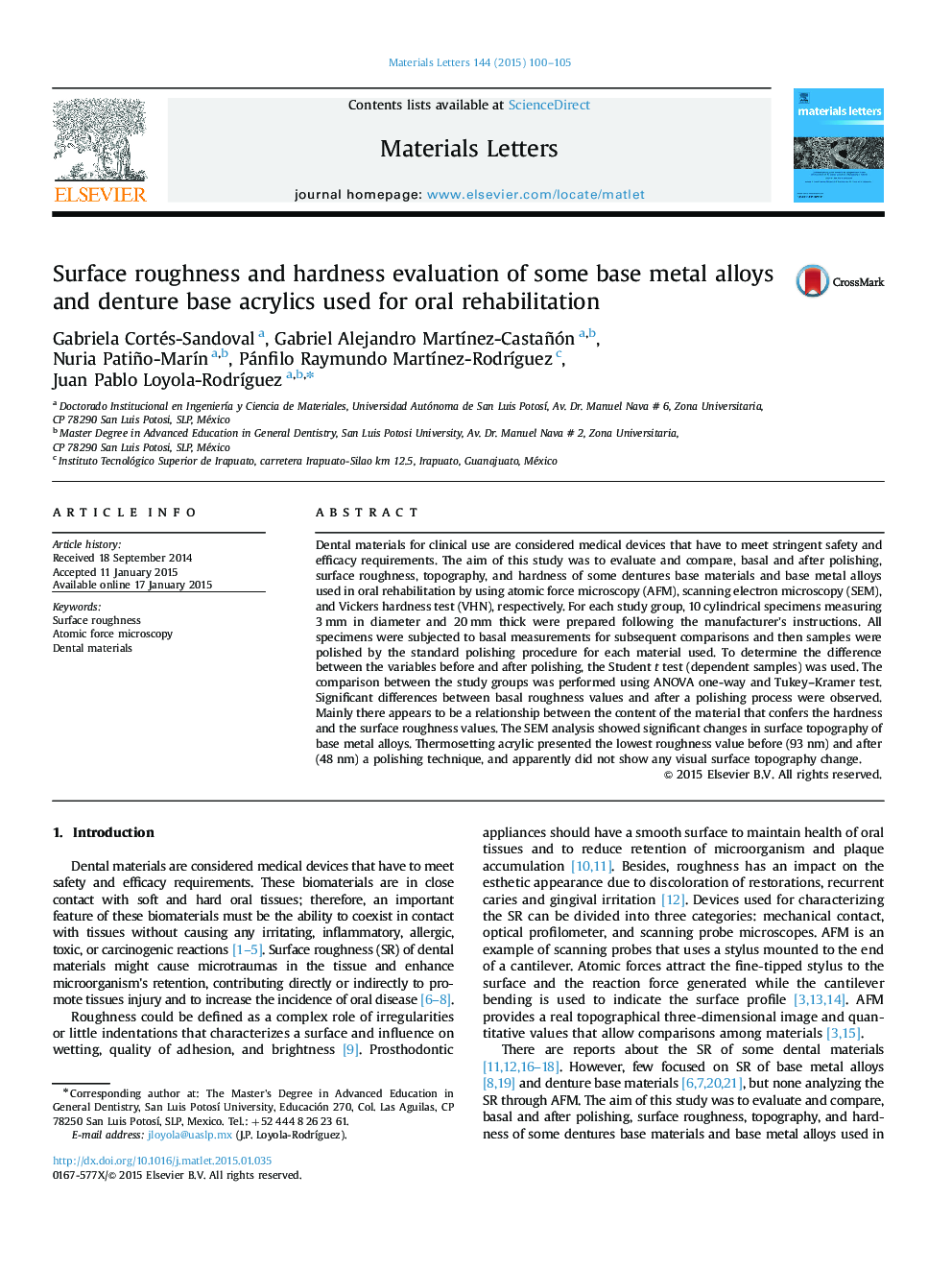| Article ID | Journal | Published Year | Pages | File Type |
|---|---|---|---|---|
| 1643232 | Materials Letters | 2015 | 6 Pages |
Abstract
Dental materials for clinical use are considered medical devices that have to meet stringent safety and efficacy requirements. The aim of this study was to evaluate and compare, basal and after polishing, surface roughness, topography, and hardness of some dentures base materials and base metal alloys used in oral rehabilitation by using atomic force microscopy (AFM), scanning electron microscopy (SEM), and Vickers hardness test (VHN), respectively. For each study group, 10 cylindrical specimens measuring 3 mm in diameter and 20 mm thick were prepared following the manufacturer׳s instructions. All specimens were subjected to basal measurements for subsequent comparisons and then samples were polished by the standard polishing procedure for each material used. To determine the difference between the variables before and after polishing, the Student t test (dependent samples) was used. The comparison between the study groups was performed using ANOVA one-way and Tukey-Kramer test. Significant differences between basal roughness values and after a polishing process were observed. Mainly there appears to be a relationship between the content of the material that confers the hardness and the surface roughness values. The SEM analysis showed significant changes in surface topography of base metal alloys. Thermosetting acrylic presented the lowest roughness value before (93 nm) and after (48 nm) a polishing technique, and apparently did not show any visual surface topography change.
Related Topics
Physical Sciences and Engineering
Materials Science
Nanotechnology
Authors
Gabriela Cortés-Sandoval, Gabriel Alejandro MartÃnez-Castañón, Nuria Patiño-MarÃn, Pánfilo Raymundo MartÃnez-RodrÃguez, Juan Pablo Loyola-RodrÃguez,
